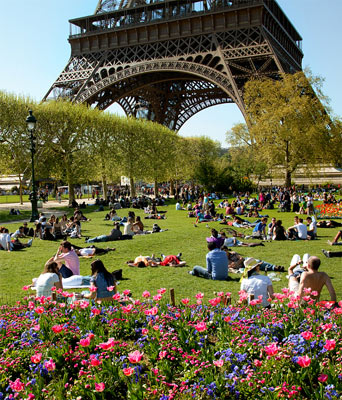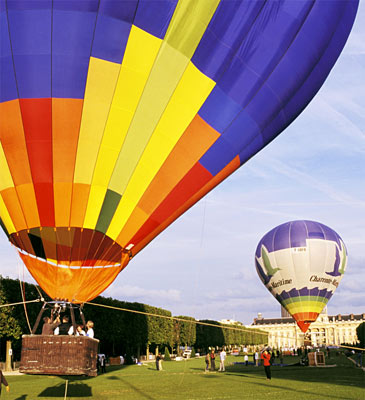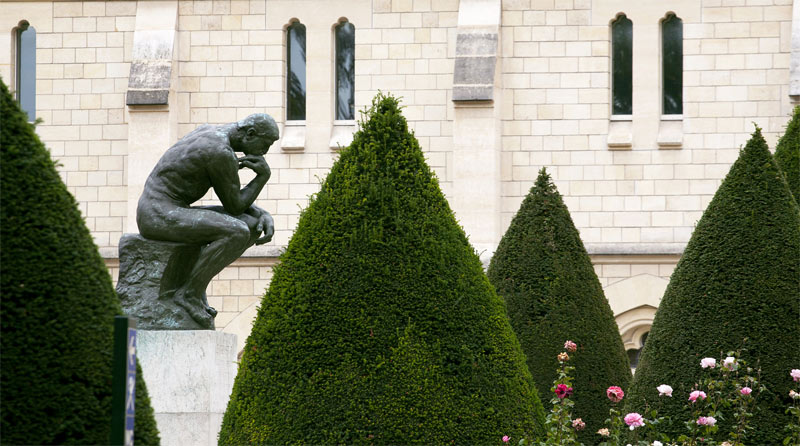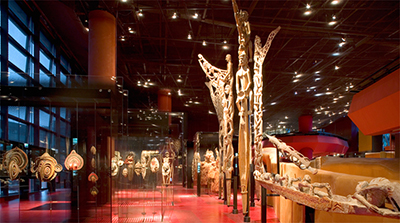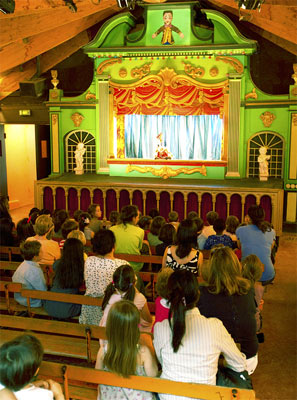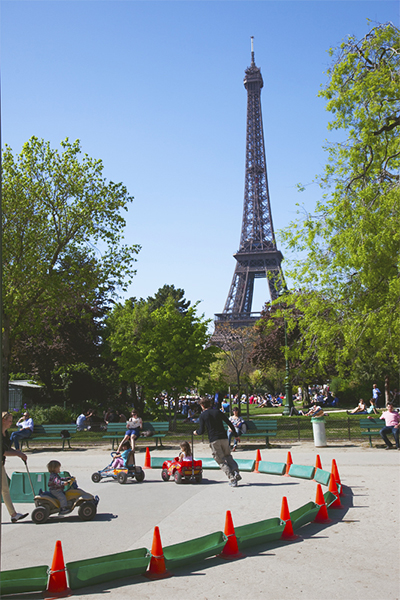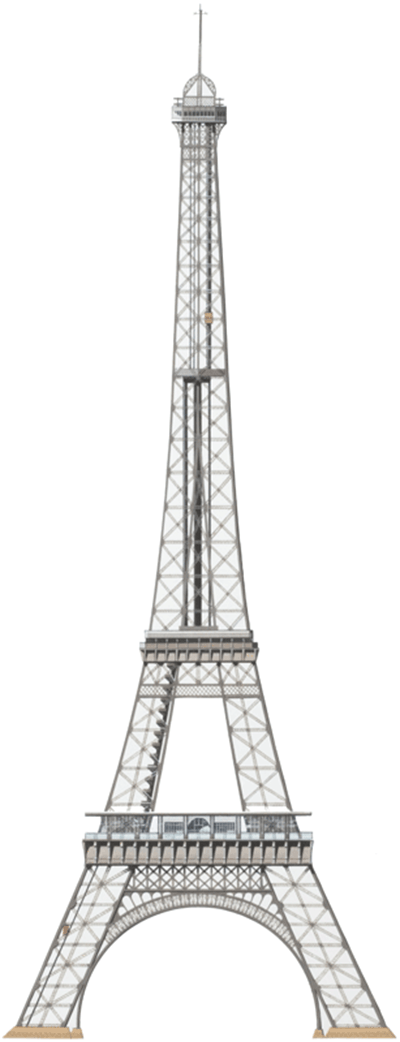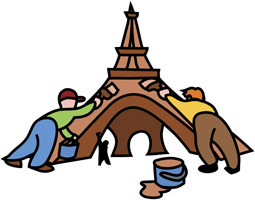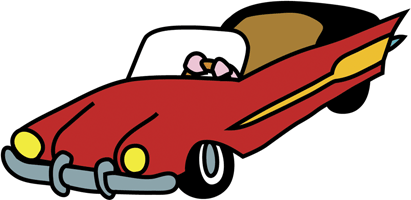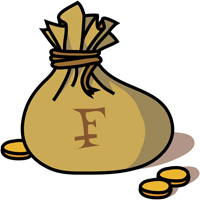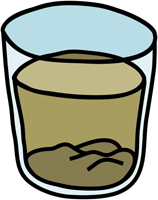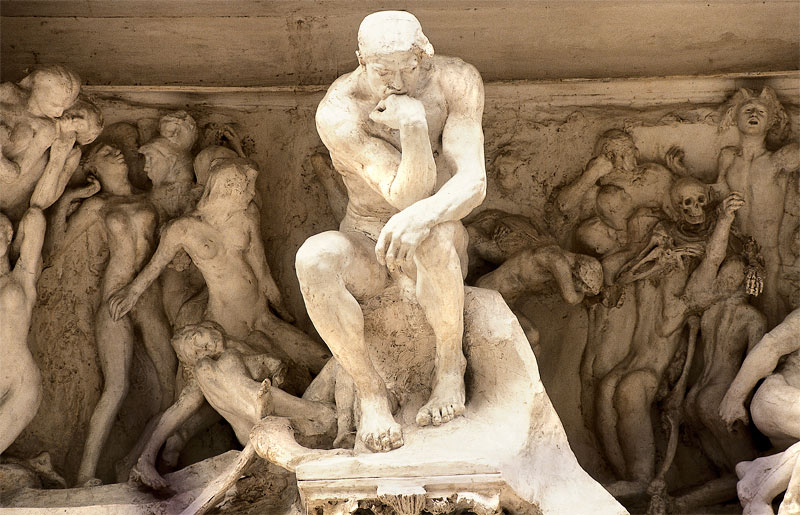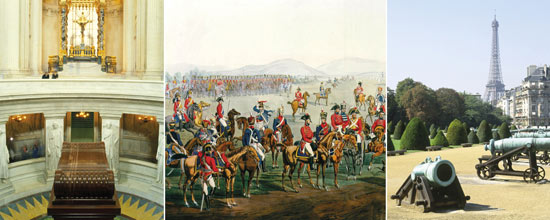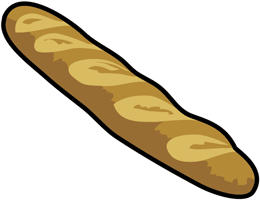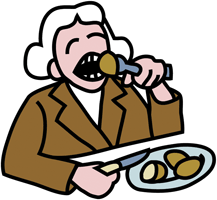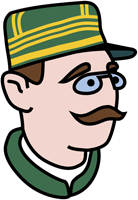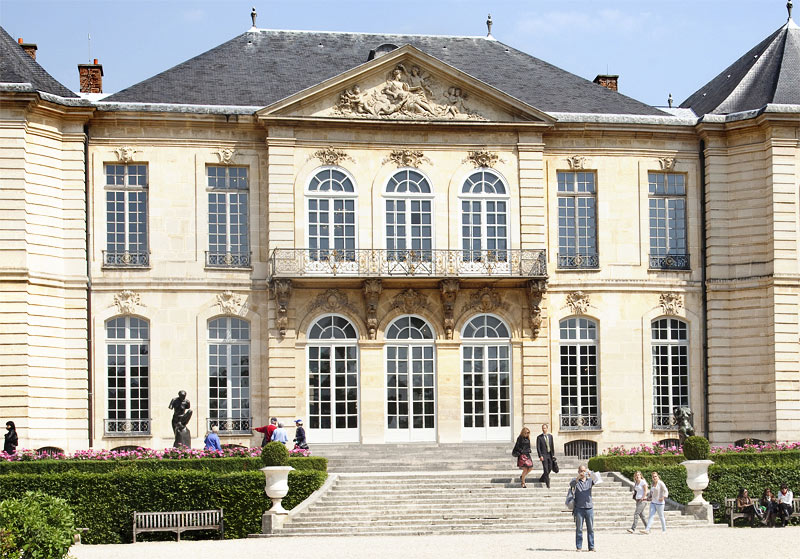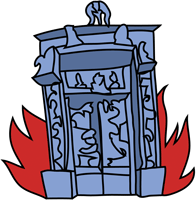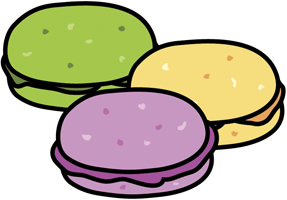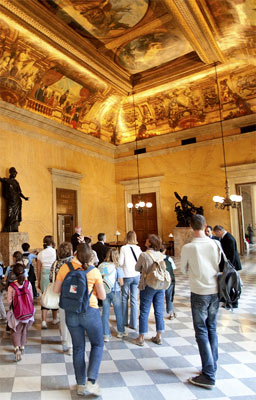From the moment kids arrive in Paris they want to get to the top of the Eiffel Tower. In summer be prepared for big crowds. If the plan is to have a picnic, buy supplies beforehand, since shops here are few and far between; for the same reason it is best to bring snacks, as the kiosks are expensive. Exploring this area requires a lot of walking so, for small children, be sure to bring a pushchair. On Sundays and public holidays, Quai Branly is closed to traffic and is a fun place to rollerblade or take a stroll.
1. Eiffel Tower
The iron lady of Paris
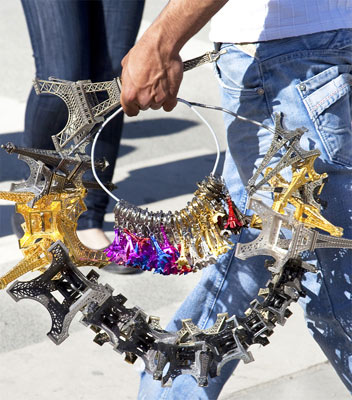
Colourful scale models of the Eiffel Tower
There is something irresistible about the Meccano-style star of the Paris skyline. It is a magnet for children, whose main ambition is to get to the top as fast as possible. In 1886, a competition was held to build a tower at the gates of the Exposition Universelle of 1889, to commemorate 100 years since the Revolution. Gustave Eiffel emerged as the winner from among 170 entries, which included a giant watering can and an enormous guillotine. Far from an instant hit, the Eiffel Tower (Tour Eiffel) was lucky not to be torn down later.
Key Features
1. Third level The viewing gallery is 276 m (906 ft) above the ground. Mr Eiffel had an office here.
2. Crisscross girders The complex pattern of the girders helps to stabilize the tower on windy days. The metal parts can expand up to 12 cm (5 inch) on hot days.
3. Second level At 115 m (376 ft), this level is separated from the first by 359 steps, or a few minutes in the lift.
4. First level At a height of 57 m (187 ft), this level can be reached by lift or by 360 steps.It has a glass floor giving fabulous views and a new exhibition space.
5. Bust of Eiffel Eiffel was sculpted by Antoine Bourdelle in 1929 and the bust was placed below the tower in his memory.
6. Double-decker lifts These vintage lifts ply their way up and down to and from the second floor.
7. Eiffel’s staircase See a piece of the original staircase that was taken down in 1983 to make way for new lifts. Gustave Eiffel would walk up to the top to his office.
8. Champ-de-Mars A former parade ground, these long gardens stretch from the tower’s base to the Ecole Militaire (military school).
• Sparkling Eiffel Every evening since the millennium, a 200,000-watt lighting system makes the Eiffel Tower sparkle for 5 minutes every hour, on the hour, until 1 am.
• Viewing gallery On a clear day it is possible to see Chartres Cathedral, 80 km (50 miles) away.

Left Sparkling Eiffel Tower Middle Bust of Eiffel Right View from the gallery
Kids’ Corner
Do you know…
-
On a hot sunny day the tower leans up to 18 cm (7 in).
-
It takes 25 painters and 60 tons of paint to touch up the base of the tower every seven years and the top part every five years.
-
In 1948, famous circus owner Bouglione took the oldest female elephant in the world (85 years old) up to the first floor of the tower.
Towering towers
The Eiffel Tower was the tallest building in the world until the Empire State Building was completed in 1931.
Car crazy
In 1959, Julien Bertin, aged 10, became the 35-millionth visitor to the Eiffel Tower. He won a car but neither of his parents could drive.
What a heap of scrap!
In the 1920s the Eiffel Tower was in such a bad state of repair that the government considered pulling it down. In 1925, con-man Victor Lustig, who claimed he was the official in charge of secretly selling it off, met six scrap metal dealers at the Hôtel Crillon. He demanded a heavy bribe to secure the deal and escaped to Austria with the money. The metal dealers, however, were too embarrassed to admit what had happened and a month later Lustig came back and sold the tower a second time. This time he was not so lucky–the victim reported him.
2. Champ-de-Mars
War, peace and puppets
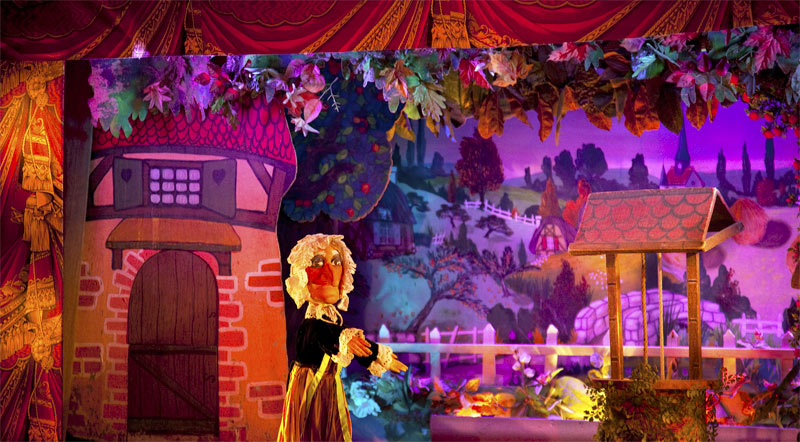
Puppet show at the old-fashioned Marionettes du Champ-de-Mars
Once a military parade ground, the vast Champ-de-Mars with its long sweeping pathways is perfect for riding a bike and kicking a ball about. It was here that a grudging Louis XVI was forced to accept the new constitution on 14 July 1790. Today, watch a Punch-and-Judy-style puppet show at the Marionettes du Champ-de-Mars, the old-fashioned theatre on the northeastern side of the park, which is fun even if the kids do not speak a word of French. At Le Mur de la Paix, the Wall of Peace monument, near the Ecole Militaire, leave a message of peace in the cracks.
Kids’ Corner
Look out for…
Stinky street signs. The sewers run parallel to the streets above, and have name signs just like their open-air equivalents.
Look out for…
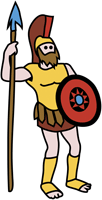
1. The wall of Peace. A monument in the Champ-de-Mars has the word “peace” written in 49 languages. Can you find yours?
2. The God of War. The Champ-de-Mars was once a parade ground. It is named after Mars, the Roman god of war.
Stairway to heaven
During the Revolution, a fanatical revolutionary, Maximilien Robespierre, seized control of Paris. The Revolution had abolished Christianity and turned all the churches into barns and warehouses, so Robespierre decided to invent a new religion. He built a plaster mountain in the Champ-de-Mars to celebrate his new Cult of the Supreme Being. At the end of the festivities he made a dramatic appearance at the top dressed in a toga. Tongues began wagging that he fancied himself as the Supreme Being and before long he was dispatched off to meet his maker after a trip to the guillotine.
3. musée du quai Branly
Skulls, masks and magic

Artifacts from Africa on display in the musée du quai Branly
Opened in 2006, the musée du quai Branly is home to an amazing ethnographic collection. The exhibits are presented in striking, original ways, often through film and music, which makes them especially accessible to children. The museum is crammed with fascinating objects from all over the world. Follow in the footsteps of the great explorers, such as André Thévet who was sent by the King of France to found a colony in South America in 1555, or the team who drove a Citroën car 30,000 km (18,641 miles) across Asia in 1931. Among the treasures they brought back was a beautiful painted saddle from Uzbekistan. Discover the shrunken heads from the South Seas but also look out for the 1,000-year-old wooden statue from Africa. It is both a man and a woman, with unborn twins in its stomach.
4. Les Egouts
What is that smell?
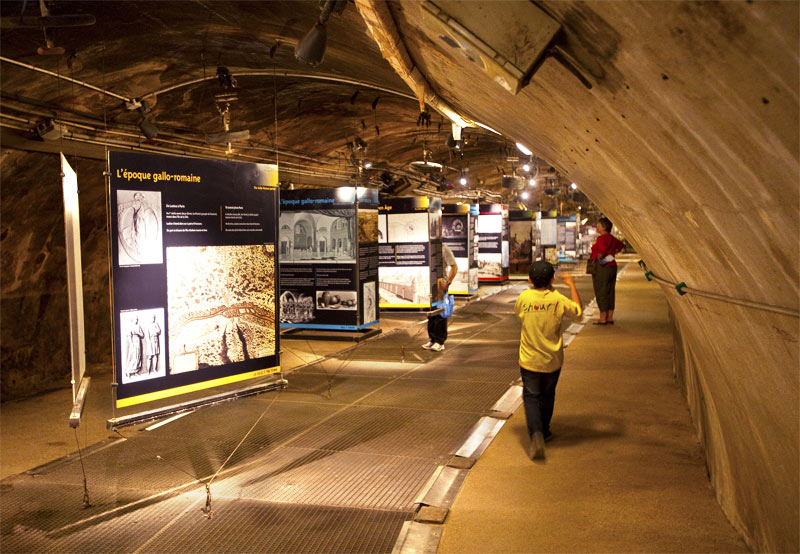
A history tour of Paris’s atmospheric sewers, Les Egouts
Victor Hugo made the sewers of Paris famous in his well-known novel, Les Misérables. Kids, however, will probably think Remy the rat, the star of Ratatouille, put them on the map. A feat of 19th-century engineering, the sewers run parallel to the streets above for 2,400 km (1,490 miles), and would stretch as far as Istanbul. Between 1800 and 1850, the population of Paris doubled to over a million but the city had very few underground sewers. In the 1850s, Baron Haussmann transformed standards of living by building a remarkable hidden parallel city and it was soon a must-see for visitors, among them Tsar Alexander II of Russia. Today, visitors can take a tour of the sewers and discover the mysteries of underground Paris. All of the tours are limited to an area around the Quai d’Orsay entrance, and are on foot.
Kids’ Corner
Dirty, icky and yucky
In the Middle Ages people in Paris drank the water from the Seine even though they dumped their rubbish in the river and the sewers emptied directly into it.


